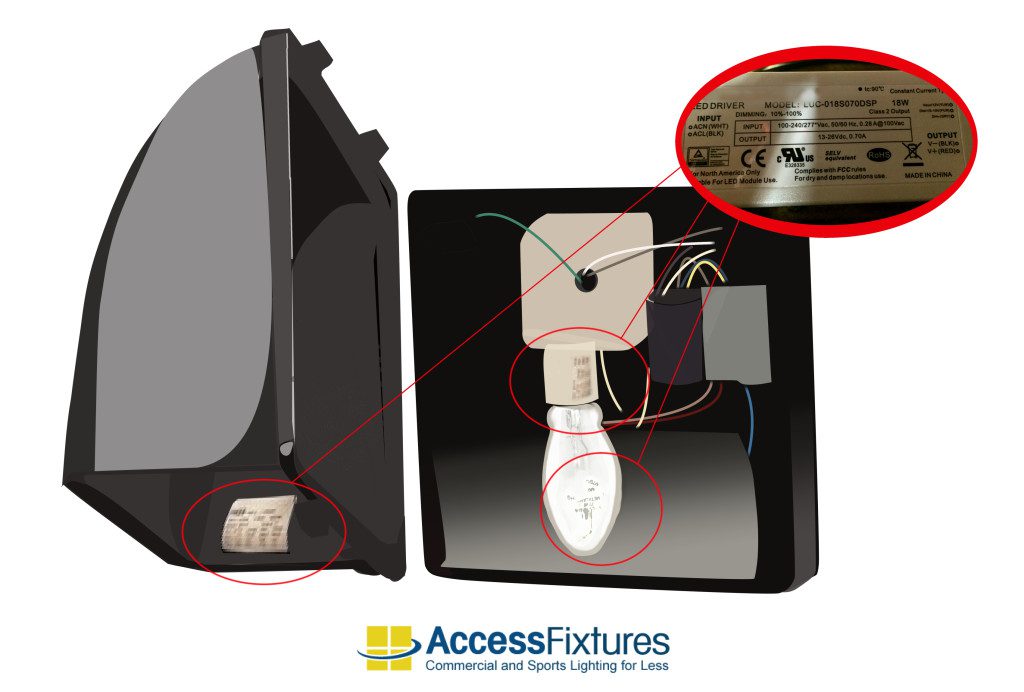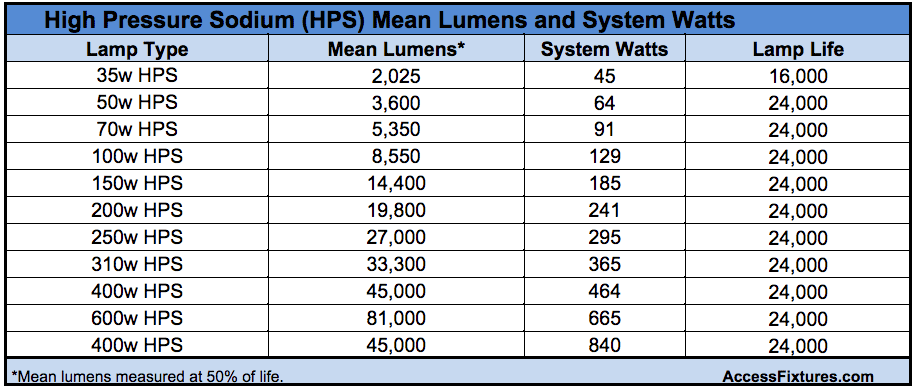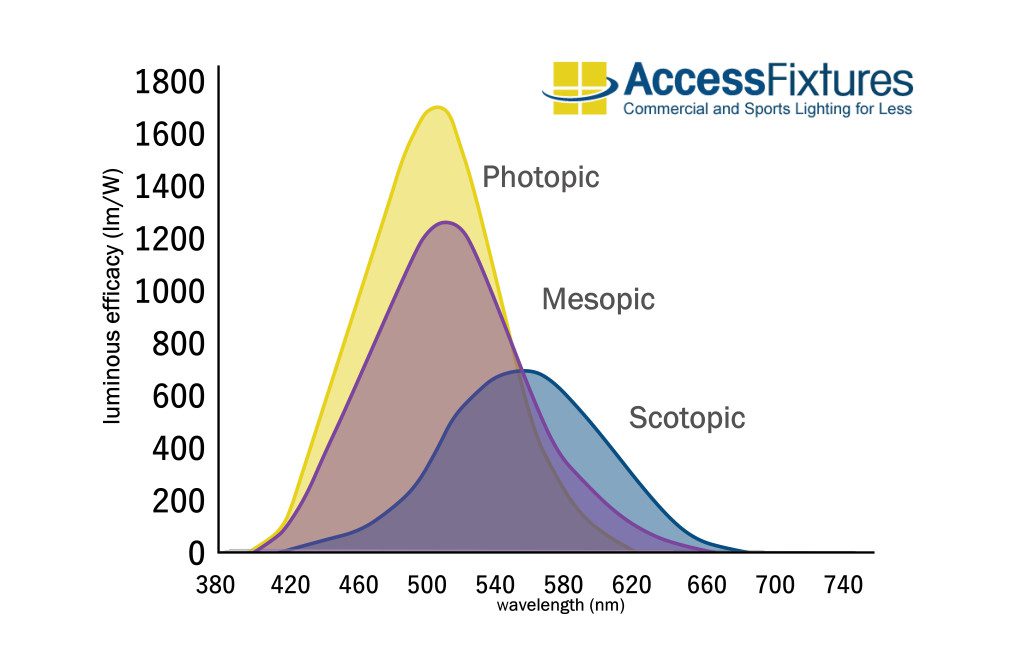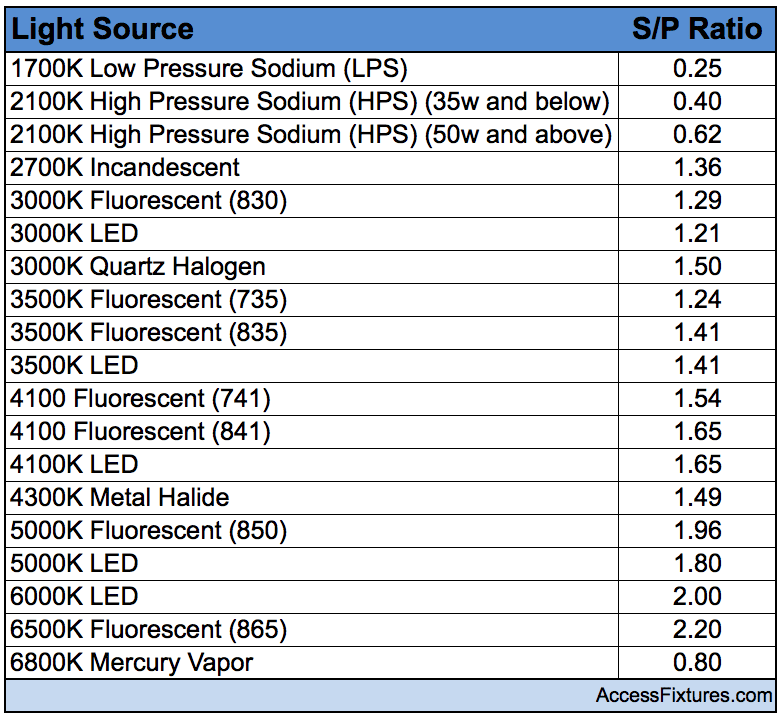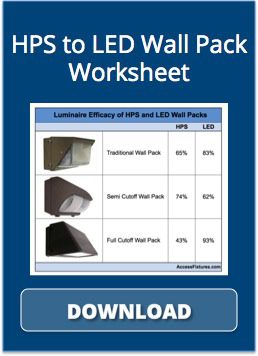 Many first-time customers coming to Access Fixtures—even those new to the world of commercial lighting—know they want to upgrade to LED. The technology has become so efficient, cost-effective, versatile, and easy to maintain, it’s surpassing traditional lighting technologies faster than we ever could have expected.
Many first-time customers coming to Access Fixtures—even those new to the world of commercial lighting—know they want to upgrade to LED. The technology has become so efficient, cost-effective, versatile, and easy to maintain, it’s surpassing traditional lighting technologies faster than we ever could have expected.
But what if you already have HPS fixtures installed? How hard is it to make the switch? You may be surprised to find that the transition isn’t as simple as making a watt-for-watt switch. Because of the differences in HPS and LED technologies, you’ll have to make a series of calculations if you want to find a comparable LED wall pack to replace your HPS fixture.
Not too long ago, Access Fixtures was contacted by a property owner seeking to upgrade her outdated 250w, 2100K, high pressure sodium (HPS) wall packs to LED wall packs. Like most customers looking for an LED option, she wanted to take advantage of the superior efficiency of LED technology to save energy and reduce the need for maintenance. She also wanted her new wall packs to emit a familiar, warm light.
Using her request as an example, we’ll walk you through how Access Fixtures lighting specialists found her just the right LED wall pack replacements to upgrade her outdated HPS luminaires.
1.) Confirm the Wattage of the High Pressure Sodium Lamp in Your Existing Wall Pack
Since LEDs are so much more efficient than HPS systems, wattage isn’t a simple one-for-one tradeoff. However, knowing the wattage of your current fixture is the first step to determining which LED wall pack will provide the lighting you want.
Your existing light fixture will display its wattage information: on a tag inside the luminaire, on the ballast, or on the lamp itself. Once you have the HPS lamp wattage, you can move to the next step. We confirmed with the customer that she was using a 250w HPS wall pack.
2.) Find the Mean Lamp Lumens of Your High Pressure Sodium Lamp
Mean lamp lumens is a lamp’s average lumen output over the course of its life. High pressure sodium (HPS) lamps start their operating life with a high lumen output that degrades over time, a phenomenon referred to as lumen depreciation. Mean lamp lumens account for lumen depreciation with consideration to the amount of lumens emitted by the lamp after 50% of its rated life. Many manufacturers will have this information available if you contact them with the HPS fixture model number. For your convenience, we have developed the following table, “High Pressure Sodium (HPS) Mean Lumens and System Watts,” that lists the mean lumens for popular HPS lamp wattages (the table also includes other data that we will use in later steps).
Using the table, we can see the mean lamp lumen output for our customer’s 250w high pressure sodium wall pack is 27,000 lumens.
3.) Adjust Mean Lumen Output for Visible Lumens (Scotopic vs. Photopic Lumens)
Visual perception has two components: photopic and scotopic vision. Photopic vision refers to sight in high light levels and is controlled primarily by our cones. Scotopic vision refers to sight in lower light levels and is controlled primarily by our rods. Recent studies show that most of our visual perception is the result of a combined effort between the rods and cones. This visual range is called the mesopic region.
The ratio between a lamp’s scotopic luminance and its photopic luminance is called its S/P ratio. A higher S/P ratio will provide sharper vision and better color rendering. To find the actual visibility provided by a fixture, you need to determine the S/P ratio and multiply it by the mean lumens of the luminaire.
See the following table for S/P ratios. The S/P ratio for our customer’s 2100K 250w HPS wall pack is 0.62.
Once determining the S/P ratio, it is time to determine the visually effective lumens (VELs), also called pupil lumens or usable lumens. A quick and effective way to estimate VELs for HPS fixtures is to multiply the mean lamp lumens by the S/P ratio. In the example of the 250w HPS, we would use the following equation:
27,000 x 0.62 = 16,740 VELs
4.) Determine the Luminaire Efficacy of Your HPS Wall Pack
To calculate an HPS luminaire’s efficacy, divide its emitted lumens by its lamp lumens.
Luminaire Efficacy = Emitted Lumens / Lamp Lumens.
The manufacturer of your HPS wall pack will have the figures for both emitted lumens and lamp lumens. If you want to save yourself a call, you can use the following cheat sheet, “Approximate Luminaire Efficacy of HPS and LED Wall Packs,” to get straight to your answer. It is important to note that the housing style of a fixture will affect its efficacy; a traditional wall pack will have greater efficacy than its full cutoff equivalent. If you’re still unsure, call or email us a picture of your existing wall pack ([email protected] is the best way to reach us). We will be able to estimate its total luminaire efficacy.
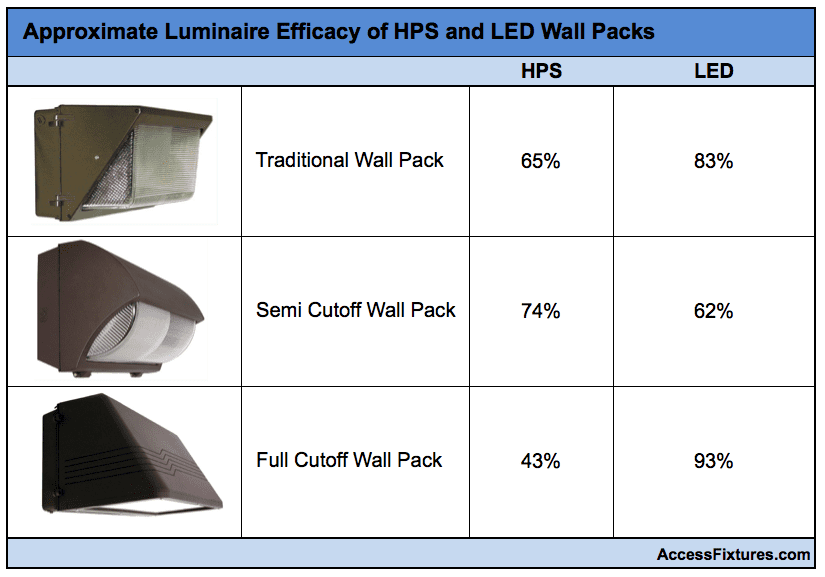
Our customer’s 250w HPS wall pack had a traditional housing, so we can use 65% for her equation.
5.) Calculating Mean Visible Luminaire Lumens of Your HPS Wall Pack
Mean visible luminaire lumens is the average number of lumens put out by a wall pack over its lifetime. This calculation is fairly simple. Multiply the VELs we found in step 3 by the total luminaire efficacy we found in step 4.
For the customer with a 250w HPS wall pack, the equation would look like this:
16,740 x 65% = 10,881 mean visible luminaire lumens
6.) Calculating Mean Visible Luminaire Lumens for LED
Once you know the mean visible luminaire lumens for the HPS wall pack, you have to find this same figure for LEDs and compare the two. Easy enough, right?
Well, not quite. Due to the differences between HPS and LED technology, the calculations for LEDs are slightly different. If you’re not sure which LED fixture to use, a good starting point is to halve the HPS wattage as the ideal LED wattage. For example: the customer had a 250w HPS wall pack; half of that is 125w. The closest LED wall pack would be a 126w LED wall pack, so we used that fixture as our starting point. Remember, though, that this method only provides an educated guess; after running the following calculations, you’ll likely want to explore different LED wattages to find a better match for your needs. Take the following steps to find the mean visible luminaire lumens for the LED wall pack.
1.) Determine the initial light source lumens. Most manufacturers will have data on initial light source lumens on record.
The 126w LED lamp throws 17,724 initial light source lumens.
2.) Multiply the initial light source lumens by 85% to get the mean lamp lumens. Keep in mind that LED fixtures sometimes use LED chips instead of lamps; for the sake of this exercise, we’re using “mean lamp lumens” to refer to both styles. Also recall our earlier discussion on lumen depreciation; LEDs depreciate far less drastically than HPS—so much so that an LED fixture at 85% of its rated life will perform as well as an HPS fixture at 50% of its rated life.
17,724 x 85% = 15,065.4 mean lamp lumens
3.) Use the S/P ratio chart to select the S/P ratio for the LED wall pack.
The S/P ratio for a 3000K LED is 1.21, or 121%.
4.) Multiply mean lamp lumens by the S/P ratio to find the VELs of the LED fixture.
15,065.4 x 121% = 18,229.13 VELs
5.) Use the “Luminaire Efficacy of HPS and LED Wall Packs” table to determine the efficacy of the LED fixture.
The efficacy of a traditional LED wall pack is 83%.
6.) Find the mean visible luminaire lumens by multiplying the VELs by the efficacy of the wall pack.
18,229.13 x 83% = 15,130.18 mean visible luminaire lumens
At this point, you know the mean visible luminaire lumens for both HPS and LED. If we look back to step 6, we can note that the figure for the mean visible luminaire lumens of our customer’s 250w HPS wall pack was 10,881. The figure for the mean visible luminaire lumens of the 126w traditional wall pack is 15,130.
7.) Successfully Choosing the Right Luminaire for You
If we compare the two mean visible luminaire lumens of the two wall packs, we can see that the 126w LED we used in step 6 would provide far more light than would be necessary. Once realizing this, we ran the numbers for lower LED wattages until we found one that provided similar mean visible luminaire lumens to the customer’s HPS wall pack.
We found that our 63w traditional wall pack threw 7,565 mean visible luminaire lumens. At this point, we knew we were close. We ran the calculations for a 95w wall pack to see if it would be a better fit for this customer, and it was!
Our customer wanted her new LED wall pack to provide similar light intensity and color to her old HPS wall pack and this one seemed like the right one for the job. We presented the 95w High Output LED Large Traditional Wall Pack 120v-277v as her ideal replacement. It throws about 11,348 mean visible luminaire lumens—right in the same ballpark as her 250w HPS. She was happy with our solution, and the new LED wall packs were installed less than two weeks later.
The new fixtures emit similar light; save an enormous amount of electricity; improve visibility; reduce the need for maintenance; and give off the warm, 3000K glow she wanted. They will provide our customer up to 100,000 hours of energy-efficient illumination.
We don’t expect you wade through all these calculations on your own—that’s why we’re here! Simply enough, we love this stuff and look forward to helping you navigate the transition from HPS to LED. Give us a call at (800) 468-9925 and we’ll find you a solution!

